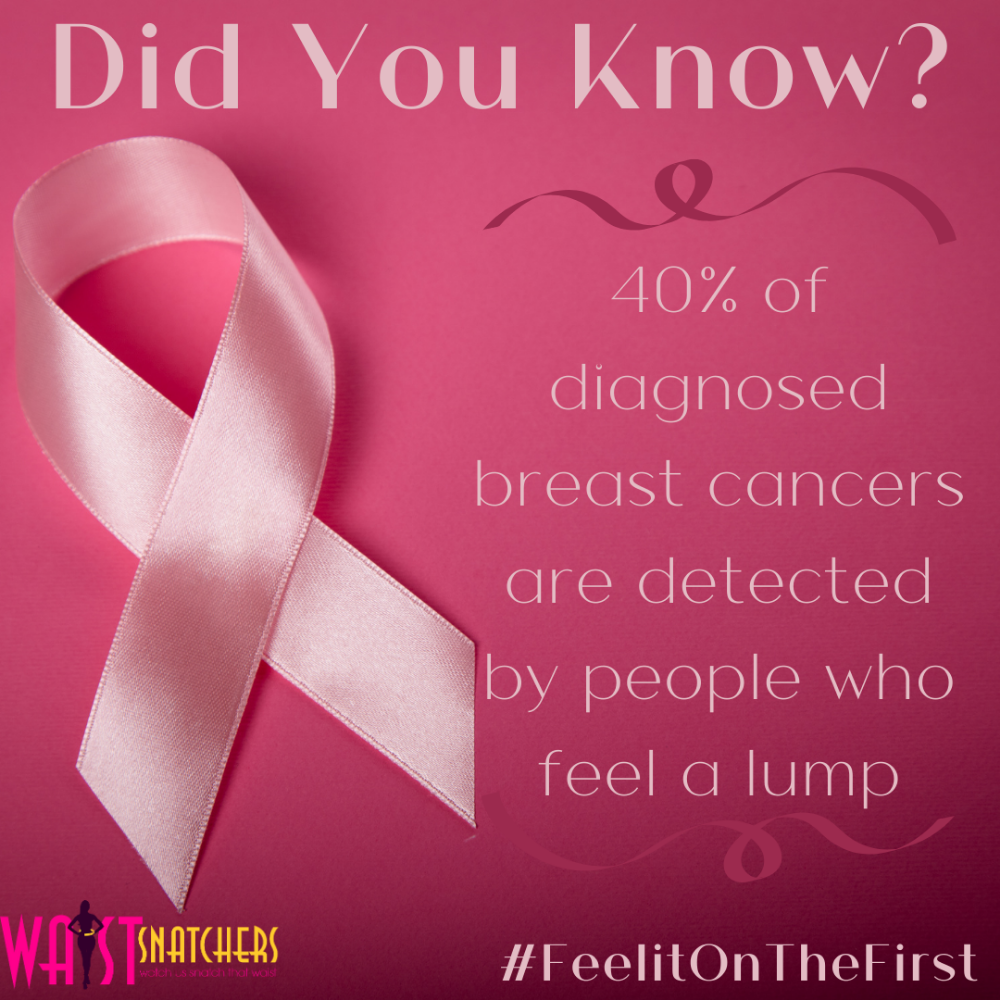by Ifeoma Egbulem October 1, 2020
October is here, and we are officially in Breast Cancer Awareness Month. Today is the first day of the month, and we want to remind everyone to #FeelItOnTheFirst!
If you aren’t already aware of the phrase, “Feel it on the First” was coined by Nalie Agustin. Nalie was diagnosed with Breast Cancer back in 2013 after she detected lumps in her left breast. She started the “Feel it on the First” campaign to encourage people to check themselves for signs of breast cancer.
Did you know that 40% of diagnosed breast cancers are detected by people who feel a lump? We encourage you all to #FeelitOnTheFirst and take action for the wellness of your health. Here are instructions if you don’t know how to do a breast self-exam:
5 Steps to do a breast self-exam:

Step 1: Look at yourself in a mirror with your hands on your hips and shoulders straight.
You are looking for your breasts to be their usual size, shape, and color. Look for them to be evenly shaped without visible distortion or swelling.
Bring any of these following changes to your doctor’s attention:
Redness, soreness, rash, swelling, dimpling, puckering, bulging of the skin, or a nipple that has changed positions or inverted.

Breast Self-Exam – Steps 2 and 3
Step 2: Raise your arms above your head and looks for the same changes listed from Step 1.
Step 3: While looking at yourself in the mirror, check to see if you see any fluid coming out of one or both nipples. The fluid could be watery, milky, yellow, or bloody.

Step 4: Now you have to lie down to feel your breasts. Use your right hand to feel the left breast and left hand to feel the right breast. In a circular motion, use a firm, smooth touch with the pads of your fingers to cover the entire breast. Keep your fingers flat and together. Cover the breast from top to bottom, side to side – from the collarbone to the top of your abdomen and from your armpit to your cleavage.
Be sure to cover the whole breast.
What to do if you feel a lump
Don’t panic if you feel a lump. Most lumps turn out not to be cancer. There are numerous causes of non-cancerous breast lumps, including normal hormonal changes, a benign breast condition, or an injury. However, don’t hesitate to contact your doctor if you feel worried about a newly noticed lump on your breast(s). Knowing what to expect will help you through the process. You would typically have an appointment to evaluate the breast lump.
Make it a routine to exam your breasts on the first of the month familiarize yourself with how your breasts normally look and feel. If necessary, start a journal and record the findings of your breast exams to keep track of irregularities. Early detection saves lives for a reason.
